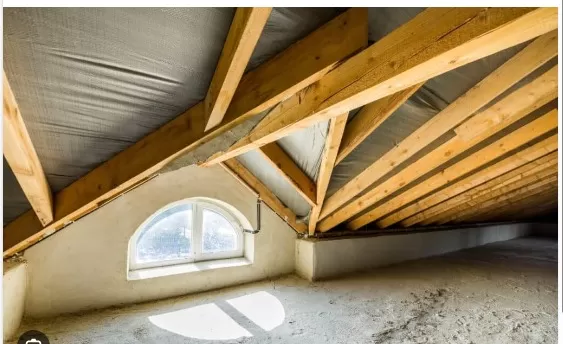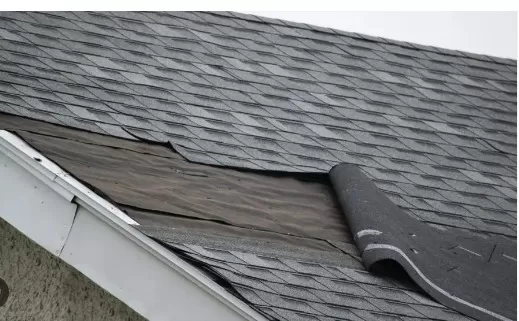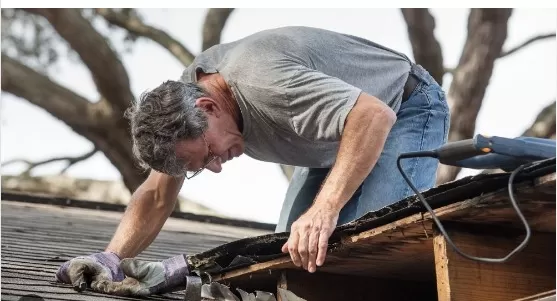Roof Replacement Indicators: 5 Signs to Look Out For. Many individuals tend to overlook the importance of their roof until a leak occurs. However, it’s crucial not to wait until water is pouring through the ceiling and buckets are required to take notice of your roof’s condition.
The National Roofing Contractors Association recommends conducting a regular roof inspection twice a year, ideally in the spring and fall. This year, a spring roof inspection is particularly vital following the heavy snow and ice accumulation during winter. Homeowners should take the opportunity to clear debris from rooftops, drains, gutters, and downspouts while also examining for any signs of damage. Here are a few indicators to look out for that may suggest it’s time for a new roof. By staying proactive and addressing any issues promptly, you can ensure the longevity and stability of your roof.
Roof Reconnaissance: Shedding Light on the Condition of Your Home

When considering the possibility of a new roof, many homeowners instinctively look outward.
However, before assessing the exterior, it’s crucial to begin your investigation from within—specifically, in the attic. Prepare yourself with a trusty flashlight and ascend into the attic space, located beneath the eaves.
As you navigate this hidden realm, keep a keen eye out for streams of light penetrating the house from above or noticeable discolorations and streaks, indicative of a roof in need of repair due to leaks.
Tracing the Roof’s History: Unraveling the Paper Trail
Embarking on a journey to assess the condition of your roof requires delving into the realm of home improvement records.
By perusing these valuable documents, you can uncover valuable information about the roof’s past, such as when it was last replaced or reshingled. This knowledge provides essential insights into the remaining lifespan of your roof. For example, a standard asphalt shingle roof tends to endure for approximately 20 to 25 years, whereas a roof installed over an existing layer of shingles necessitates replacement after two decades.
Vigilant Roof Watch: Safeguarding Your Home from Above

Maintaining a vigilant eye on your rooftop, particularly in the aftermath of severe storms, is essential to ensure its optimal condition.
Take note that shingles should lie seamlessly flat against the roof surface. If you happen upon areas with cracks, damage, or buckling, it’s a clear indication that repairs are imperative.
While inspecting the roof, extend your scrutiny to the gutters and downspouts, examining them for the presence of shingle granules. A roof shedding excessive granules may be nearing the end of its useful life, warranting prompt attention and potential replacement.
Sealing the Future: Fortifying Your Roof\’s Vulnerable Points
Looking ahead, it’s essential to direct your attention to the flashing encompassing vents, skylights, and chimneys.
This critical component serves as a barrier, sealing the vulnerable seams of your roof from the relentless onslaught of rain and harsh weather. Conduct a thorough examination of these specific areas to ensure there are no signs of cracks or breaks that could potentially pave the way for damaging leaks. In older homes, flashing is often composed of roof cement or tar, but it’s advisable to consider upgrading to a more robust and long-lasting metal flashing system. This enhancement will provide an extra layer of durability, safeguarding your roof against the elements for years to come.
Saving Your Home from Decay: Rescuing it from Rot

A roof that droops and sags is a clear indication that replacement is imperative to prevent further damage to your cherished abode.
To assess the condition of your roof, thoroughly examine its surface for telltale signs of trapped moisture, rotting boards, or areas with noticeable sagging—particularly at the lowest points of the roof structure. Identifying these issues promptly is crucial for preventing the escalation of damage and ensuring the integrity of your home remains intact.
*The information is for reference only.